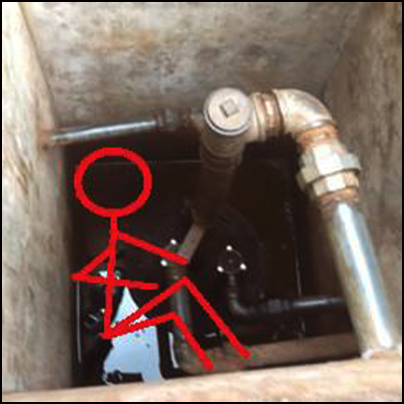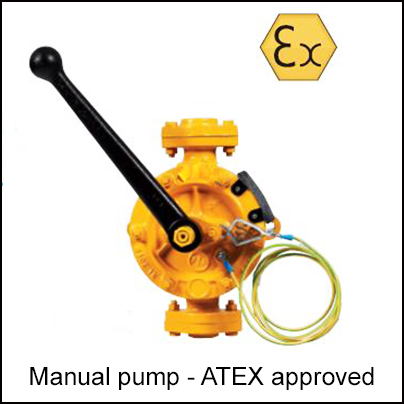-
What happened?
Serious accidents, including fatality, have occurred when service station staff entered tank manholes more than 1.3m/4ft deep.
Most accidents occurred while draining water following rains or during routine product measurements.
Inhalation of hazardous substances or suffocation from lack of oxygen could cause death or other serious consequences.

-
Why did it happen?
The causes of such incidents are often due to:
- Risk analysis not being conducted before the job started.
- The workers entering the manhole without safety protection equipment (respirators, individual gas monitors).
- Lack of oxygen or the presence of toxic gases in the chamber.
- Lack of supervision – an attendant should be on standby at all times.

-
What did they learn?
Presence of water in the tank should be checked while standing outside the manhole, e.g. by gauging with water paste. If water entered the tank, call the maintenance team for intervention.
If no water is found in the tank, the chamber should be cleaned from outside using an explosive atmosphere (ATEX) approved manual pump. Do not enter a chamber more than 1.3 meters deep.
If using a contractor, ensure they fully comply with safety rules and the prevention plan for confined spaces work - particularly continuous supervision.
Regularly check the joint of the chamber cover and wall to ensure it is watertight.
Check that dipping pipe cap is tight.
Ensure that the dipping head is close to the manhole sump cover (between -30 cm and 0 cm) and 40cm away from the lower edge.

-
Ask yourself or your crew
Do we really need to enter the tank manhole? How can we change the task to avoid entering a confined space?
Before entering a confined space, how do you know the atmosphere is safe?
What type of protective equipment do you have to wear?
Have you ever entered a confined space without protections in place? Why did you think it was necessary?
What other barriers can we put in place to prevent an incident like this happening here?

Add to homescreen
Content name
Select existing category:
Content name
New collection
Edit collection
What happened?
Serious accidents, including fatality, have occurred when service station staff entered tank manholes more than 1.3m/4ft deep.
Most accidents occurred while draining water following rains or during routine product measurements.
Inhalation of hazardous substances or suffocation from lack of oxygen could cause death or other serious consequences.

Why did it happen?
The causes of such incidents are often due to:
- Risk analysis not being conducted before the job started.
- The workers entering the manhole without safety protection equipment (respirators, individual gas monitors).
- Lack of oxygen or the presence of toxic gases in the chamber.
- Lack of supervision – an attendant should be on standby at all times.
What did they learn?
Presence of water in the tank should be checked while standing outside the manhole, e.g. by gauging with water paste. If water entered the tank, call the maintenance team for intervention.
If no water is found in the tank, the chamber should be cleaned from outside using an explosive atmosphere (ATEX) approved manual pump. Do not enter a chamber more than 1.3 meters deep.
If using a contractor, ensure they fully comply with safety rules and the prevention plan for confined spaces work - particularly continuous supervision.
Regularly check the joint of the chamber cover and wall to ensure it is watertight.
Check that dipping pipe cap is tight.
Ensure that the dipping head is close to the manhole sump cover (between -30 cm and 0 cm) and 40cm away from the lower edge.

Ask yourself or your crew
Do we really need to enter the tank manhole? How can we change the task to avoid entering a confined space?
Before entering a confined space, how do you know the atmosphere is safe?
What type of protective equipment do you have to wear?
Have you ever entered a confined space without protections in place? Why did you think it was necessary?
What other barriers can we put in place to prevent an incident like this happening here?
Serious accidents including fatality have occurred when service station staff entered tank manholes. Inhalation of hazardous substances or suffocation from lack of oxygen could cause death or other serious consequences.










